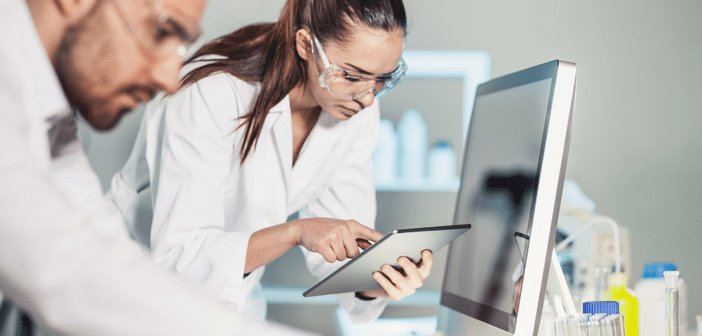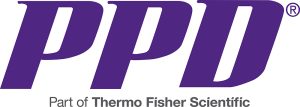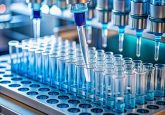The future of paperless laboratories: an interview with Chris Forsdyke

In this new digital age, is paper-based working becoming obsolete? This interview with Chris Forsdyke, VP, Vaccines and Bioanalytical labs for PPD Laboratory Services, a part of Thermo Fisher Scientific explores the future of paperless laboratories within the bioanalytical field and how this may improve processes’ efficiency and accuracy
1. How has PPD Laboratory services improved its laboratory capacity and processes and what benefits do these have?
PPD Laboratory services continues to drive capacity increases via investment in laboratory facilities in our key laboratory locations. A recent example of this includes a 50,000-square-foot facility specializing in chromatography services recently opened in Richmond (VA, USA), driving growth in our large and small molecule LC-MS capabilities.
These ongoing strategic operational expansions coupled with focused talent acquisition activities are critical, as large laboratory facilities driving an increased quantity and diversity of analytical platforms require skilled scientists to operate.
Our strategy is to continue to focus on increasing the impact that laboratory automation delivers. Automation of processes and hardware in addition to automating the life cycle of data, which is effectively our final product for our clients, is used in drug development decision-making.
Information Technology and hardware advancements continue to drive opportunities to support capacity expansion. As we support a diverse range of projects from low volume pre-clinical trials, through to large Phase 3 trials, it is important to have continuous improvements in the IT and hardware technologies
2. How have improved laboratory capabilities impacted scientists generally?
The diversity of technical platforms continues to expand, aligned with our analytical platform investments across a wide variety of drug modalities. This means that scientists have opportunities to cross-train on a wide variety of platforms and technologies providing a strong learning platform and aiding individual development. The ability to collaborate with an extensive client base, on multiple development drugs provides an environment rich in developmental opportunities.
Tools to evaluate data generated from these platforms continues to evolve. Still, the scientist always remains at the center of the analytical phase, be it the analysis of data or data evaluation.
3. Briefly, what are paperless laboratories?
Every laboratory process from sample receipt to data output leaves only a digital footprint in a paperless laboratory environment, no paper records are generated as part of the sample analysis life cycle. An ability to be completely paperless requires a robust and validated IT architecture and ultimately intuitive, user-friendly systems that promote lean cycle times and ensure data integrity and quality (since variability/transcription errors are minimized).
This is a complex transition for any regulated laboratory – interfacing with not only each process step from sample receipt through to data generation and transfer, but ensuring that each and every laboratory analytical platform can generate and process electronic records in a compliant manner- it’s critical to ensure data integrity and audit history,
There are many supporting laboratory activities that need to be taken into account too – from chronological records to lab temperatures, pH measurements, balance weighing’s, etc. All activities that have been linked together traditionally via paper-based records, in a reliable, although labor-intensive manner. A paperless laboratory, therefore, requires a meticulous understanding of processes, systems and platforms to be able to connect all together in a regulatory environment, creating a true paperless laboratory.
4. Why are individuals looking towards paperless labs now? What are the drawbacks of paper-based records?
Paperless labs have distinct operational advantages and help drive our own strategy focused on the process efficiency, specifically driving quicker data turn-around times, as well as quality and first-time-right data. This is advantageous in the drug development arena where decisions are taken based upon lab data. Delivering this data earlier can result in efficiencies in the developmental phases.
Paper records are inefficient to complete, manage and review, with transcription and recording errors being traditional drivers behind lab document errors. In our pursuit of delivering the first-time-right data, moving away from paper-based records is key.
5. How do you envisage the future bioanalytical laboratory? What new improvements would you like to see implemented?
In the future, we see continuous advances in laboratory automation. Driving both the paperless laboratory environment, aligned to quality and process efficiencies, linked to the reduction in cycle times – the average duration from receipt of a sample, to transferring the data to our clients and partners. Automation also drives other advantages in this type of operation- hardware (lab systems) driving capacity and throughput, enabling the lab to scale efficiently and effectively between volume-based clinical trials, and smaller early development/early phase clinical work and data automation leading to effectively real-time data delivery to our clients enabling them to make real-time decisions on the respective drug development projects, enabling more efficient pre-clinical and clinical projects.
In association with:







